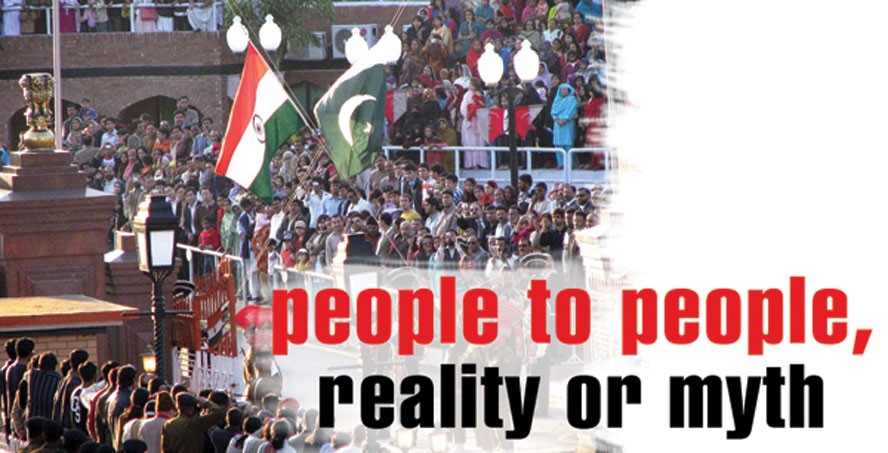
The state of people to people contact between India and Pakistan and how it impacts relations between the two countries

How do two neighbours that share a bloody history, a moment of independence that brought a partition and millions of dead, injured and displaced people in its wake, reconcile with each other? They have fought wars, hot and cold, with military and non-military means, and continue to pick dead bodies across the line of control (LOC) even in times of ‘strategic restraint’.
They have experimented with peace overtures of all kinds. 70 years have passed and they still call each other enemy. That’s how children in both countries grow up, thinking of living with an enemy as a neighbour, a country where monsters live that are ready to gobble them up.
These 70 years have swayed between troubled and less troubled times. Today, once again, both India and Pakistan find themselves in one of the more troubled phases, which has prolonged to a level where to call it a phase would be erroneous. A PML-N government here, that had peace with India as an election promise, and a Modi-led BJP government there. Nothing helps.
To refer to events of recent years like Pathankot, Uri, Saarc summit postponement, surgical strikes leading to an inward-looking government in India that turns a blind eye to violence against Muslims within, the case for peace has certainly taken a back seat.
Because the states have decided to interrupt all talk about talks -- except perhaps the DGMOs contacting each other on the hotline over the LoC killings -- they are also refusing to let the people of both countries from visiting each other. This in common parlance is known as people to people exchange that has been used as the best form of diplomacy the world over.
Read also: People to people reality and myth
Here, unlike some distant countries trying to use this mode of exchange to improve understanding, there already is a huge baggage of partition that led to mass migration and divided families on both sides. To start with, it is these people who want to meet their own. Beyond this, however, there are huge categories of people who want to do business with the other country, go visit religious sites, undergo medical treatment or just go, visit, talk, shop and come back. If you want to travel as a citizen of India or Pakistan, getting a visa is a huge hassle and the states ensure it stays like this.
Interestingly, in a third country, both Indians and Pakistanis make the best of friends. They owe it to language, culture, sense of humour, cricket, you name it.
But there’s another space where they get to meet without restriction, defying all barriers and embarrassing their respective states, and that’s the virtual space or the world of film and music and arts. That is where a sense of belonging ignores geography.
It is this people to people exchange between India and Pakistan that has happened in the past, is happening in some other realms and is being stopped from taking place by the two states that is the subject of today’s Special Report. The purpose is to create a constituency that might save the situation when all else fails. Diplomacy at its best.